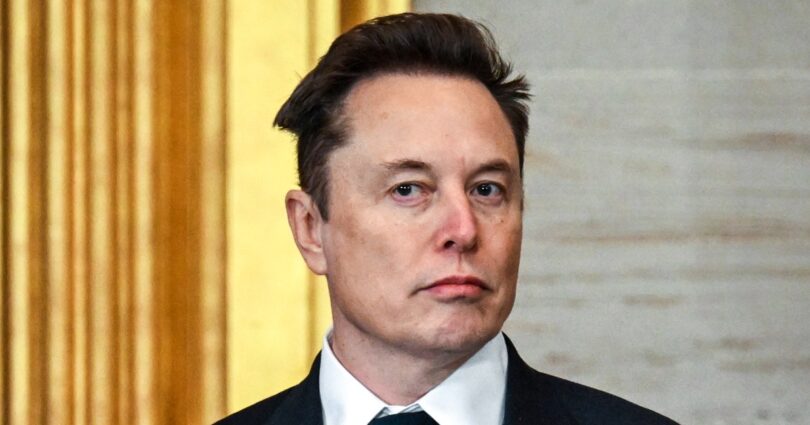It took more than eight years for former Clinton administration adviser Elaine Kamarck to cut approximately 426,000 jobs, 16,000 pages and $136 billion — in 1990s dollars — from the federal government.
So Kamarck, who ran the first phase of President Bill Clinton’s Reforming Government (“REGO”) effort, understands the impulse to scrutinize the extent of Washington’s spending excesses — and that it can be addressed.
Yet Kamarck, now a senior fellow at the Brookings Institution, told NBC News that while the “slash and burn” approach currently being taken by Elon Musk’s Department of Government Efficiency can work in Silicon Valley, it can cost actual lives when used to implement changes in government outlays.
“If you apply that same slash and burn to air traffic control, or slash and burn to CDC investigating food poisonings, guess what: People die,” Kamarck said. “It’s a big f—–g deal. It’s a completely different level of risk.”
Over the past week or so, Musk and his DOGE team have ignited a firestorm by highlighting — sometimes in false, misleading, or erroneous ways — government spending that may have come as a surprise to the American public.
Reforming federal spending remains a perennial topic of Washington discourse, and a galaxy of agencies, think tanks and NGOs are dedicated to rooting out perceived bureaucratic excesses in the government’s $7 trillion annual budget.
Notably, the information DOGE has surfaced was already available to the public. For more than a decade, a digital tool, USASpending.gov, has been accessible to anyone who wants to learn, in surprisingly granular detail, most of what the U.S. government was spending money on, and in what amounts.
Yet the political environment is such that the Musk-led DOGE team now feels emboldened to push through radical changes, arguing that the end justifies the means.
“Although it is a humorous name, ironically I think DOGE will have a very serious and significant impact on government waste and fraud and abuse — which is really astonishing,” Musk said in a recent audio-only event on X, his social media platform.
In addition to showing federal agencies’ payments for news sites subscriptions — information that DOGE has caused to go viral with deceptive context — the USASpending.gov site shows the largest individual government expenditures over the past 12 months.
These include approximately $50 billion to health care group Humana, which helps run the military’s TRICARE health program; roughly $50 billion to Lockheed Martin; about $38 billion to a group that manages Oak Ridge National Laboratory; approximately $36 billion to the Lawrence Livermore National Laboratory; and the group that manages Los Alamos National Laboratory. The laboratories alone focus much of their research on energy and national security solutions.
Few would call the necessity of those programs into question. Indeed, Musk and DOGE have set their initial sights instead on USAID, a relatively obscure agency that provides critical funding for programs abroad and whose budget accounts for approximately 1% of all government expenditures.
As Musk brings to light examples of spending at USAID that may not have relevance to most Americans’ daily lives, the effort, so far, seems to belie his goal of finding trillions of dollars in federal savings — though he has indicated the DOGE mission is only just getting started.
Kamarck said it is clear the DOGE team has started off looking for “quick wins” — not least because Trump has just four years left in office. But, he said, using databases to find specific funding elements to cut may not ultimately yield much.
Kamarck said a better target would be Medicare and Medicaid spending, which has historically been riddled with fraud, she said. (DOGE employees have reportedly become embedded in the Centers for Medicare & Medicaid Services.)
Most federal agencies, including USAID, have employed an inspector general tasked with rooting out waste and malfeasance. There are other checks, too: Since its establishment in 2007, the Department of Health and Human Services’ Medicare Fraud Strike Force has clawed back more than $4 billion in payments while filing nearly 3,500 criminal indictments.
Yet Trump appears to have viewed many inspectors general as ineffective at best, having fired 18 of them within days of taking office, including at the Health and Human Services Department.
DOGE’s methods may also be breaking laws. Courts have begun imposing injunctions on some of the DOGE efforts. The White House asserts Musk has abided by “all applicable laws” while exercising a maximalist view of the powers of the executive branch.
“Let me just start by saying that DOGE was a promise that President Trump campaigned on,” White House press secretary Karoline Leavitt said this week. “He campaigned alongside Elon Musk and was very vocal about the fact that he would be appointing Elon — or tasking Elon — with this very important role of putting together the Department of Government Efficiency.”
DOGE has drawn the ire of Democrats. Late Wednesday, Sen. Mark Warner, D-Va., gave a floor speech applauding any effort to examine spending profligacy while decrying the DOGE approach. He pointed out that his DATA Act, passed in 2014, established the first-ever way to track every dollar of U.S. government spending online via USASpending.gov.
“If there’s ways to save spending, count me in,” Warner said. But he said he opposed giving DOGE employees access to sensitive personal information, as well as the ability to potentially alter previously apportioned payments themselves.
“Why would you give someone — a coder — the potential keys to the kingdom of the United States Treasury?” he asked.
Maya MacGuineas, the president of the bipartisan nonprofit Committee for a Responsible Federal Budget, says she has some sympathy for what the DOGE team is trying to do.
“You just sometimes want to shake the federal branch and say, ‘You’ve got to do some disrupting here,’” she said.
But when it comes to disrupting systems in ways that could impact people’s lives, MacGuineas said the DOGE team needs “very different delivery systems.”
She said that what they are doing now is taking “a private-sector approach to public goods.”
“That’s absolutely the wrong approach.”
Source link








